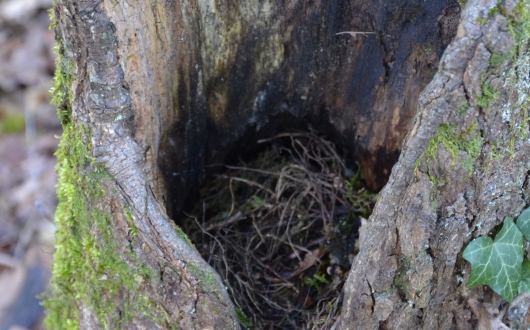On 30 January, 2020, I visited Temenica Habitat once again. My intention was to take a stroll in the area of the clay pit, but the frozen soil and partial thawing deterred me from doing so. Thus, I decided to take a walk down the woods to the right of the road that connects the villages of Hruševec and Brezje. It is an oak-hornbeam forest, which is also slightly elevated in some parts and overgrown with ordinary spruce, but otherwise it slopes slightly northward into an area resembling a ditch or a sinkhole, with a small spring of water. During the heavy rainfall, the water in the ditch increases considerably and stays at that height for a longer time. On both sides, the forest is surrounded by partly meadow and partly arable land.
During the walk, I again pay attention to mushrooms and lichens, and I pay special attention to alien or invasive plants. Right at the start of my walk, two shrub species draw my attention, namely the cherry laurel (Prunus laurocerasus)
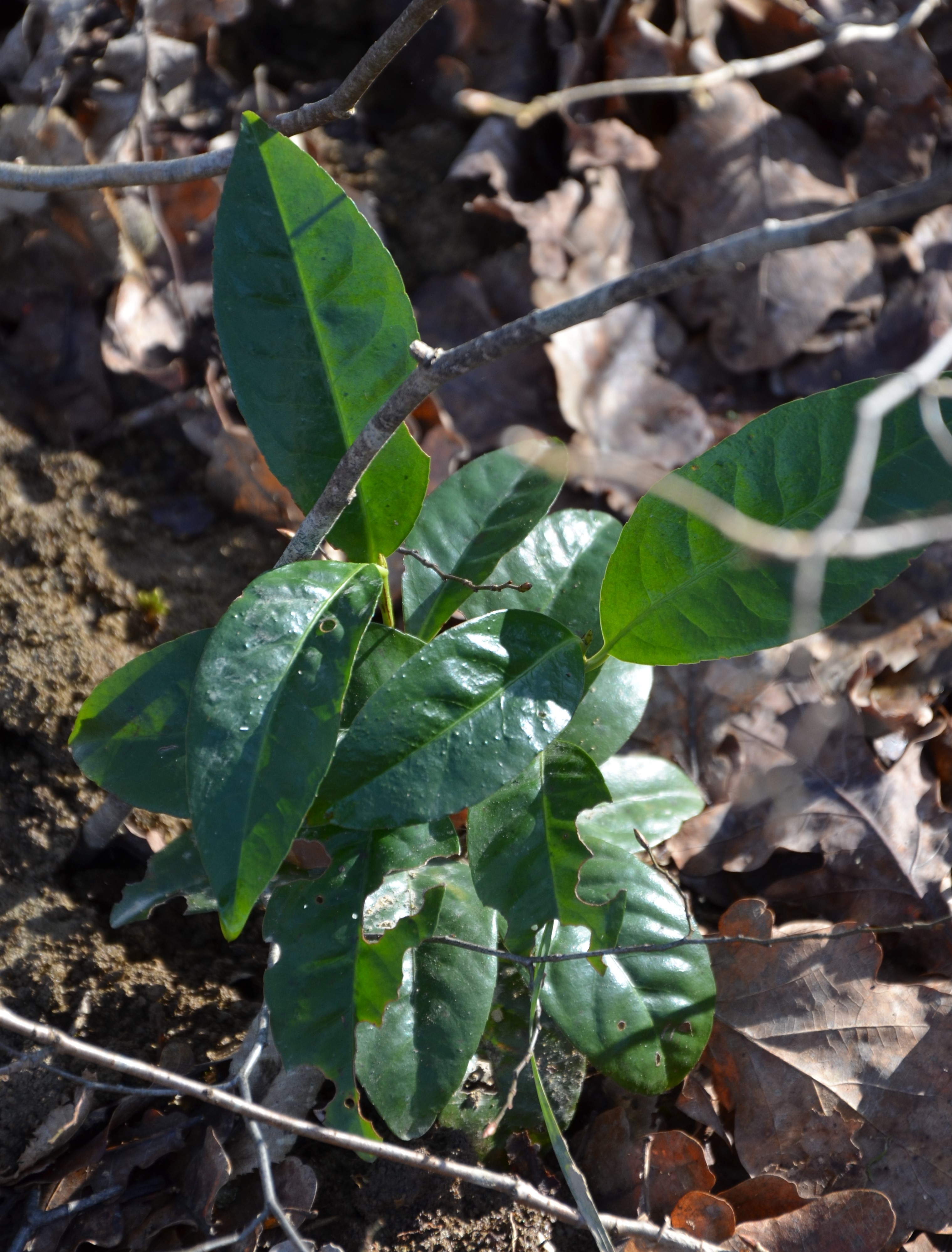
and the Oregon grape (Mahonia aquifolium).
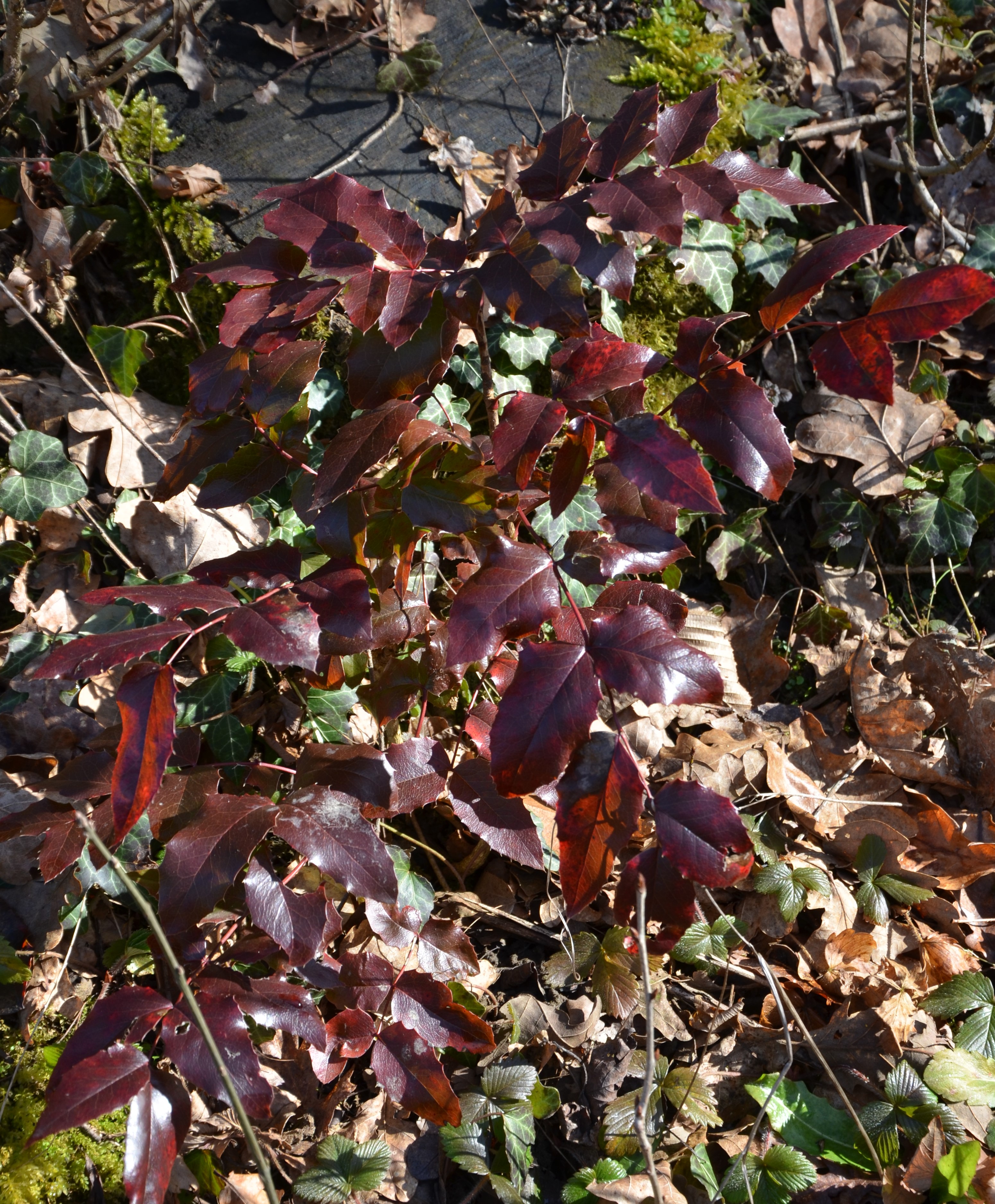
Both are evergreen species and popular ornamental shrubs that have escaped from the gardens into the nature, most likely with seeds that have been blown away by birds through their droppings. One of the invasive tree species, the boxelder maple (Acer negundo), is also widely present in this area.
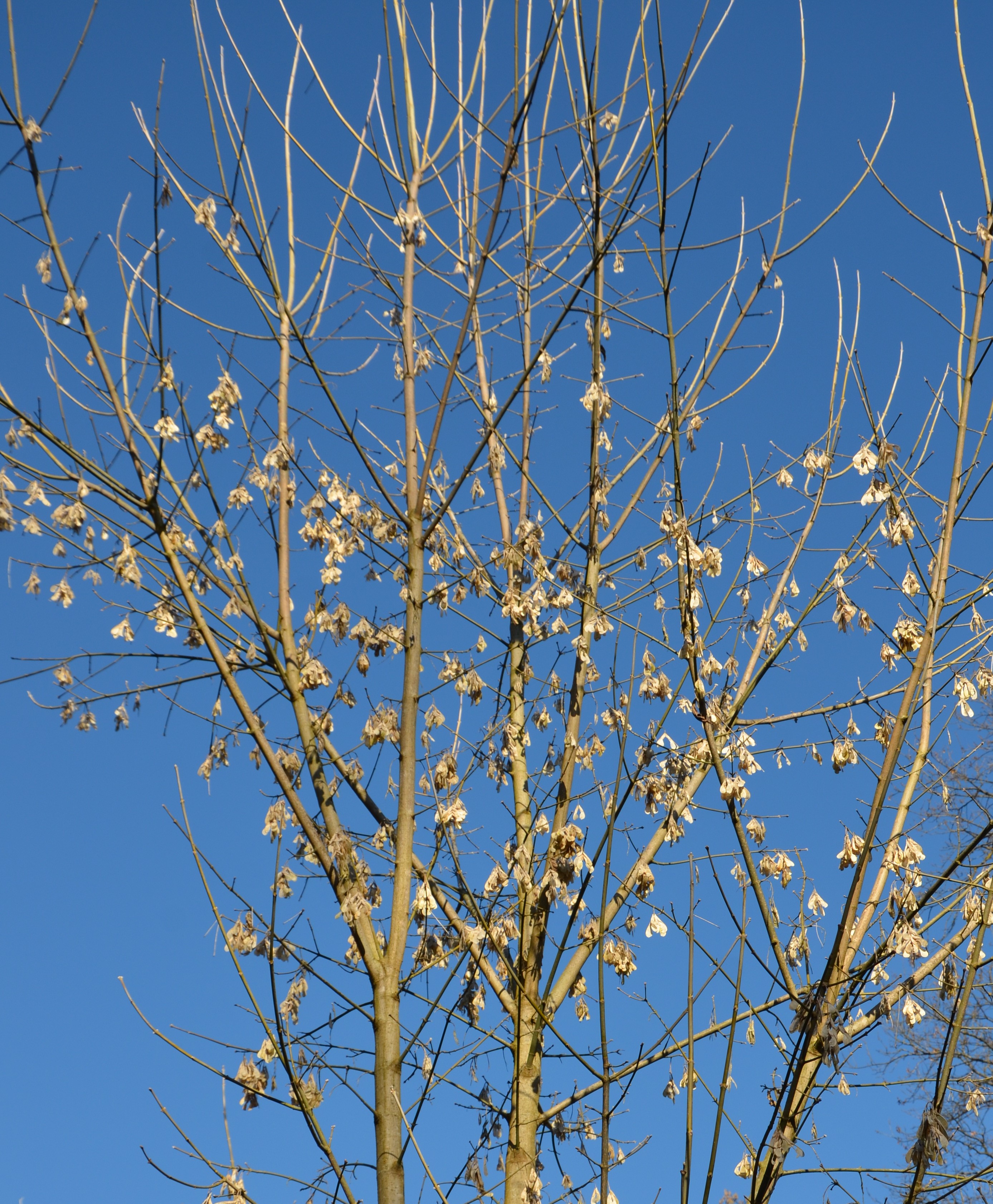
Its canopy still contains winged fruits with seeds, also called winged nuts. The trees of this maple grow very quickly, which means that its wood is softer and also very fragile. Older trees are characterized by broken tops. Their trunks are full of lichen species. Lichens are important bioindicators of polluted air. The cleanest environments are considered to be areas with thriving fruticose lichens and slightly less clean are the areas with foliose and crustose lichen. I do not notice the fruticose lichens this time, while foliose and crustose lichen are present. Among the foliose lichen species there are the Physcia stellaris
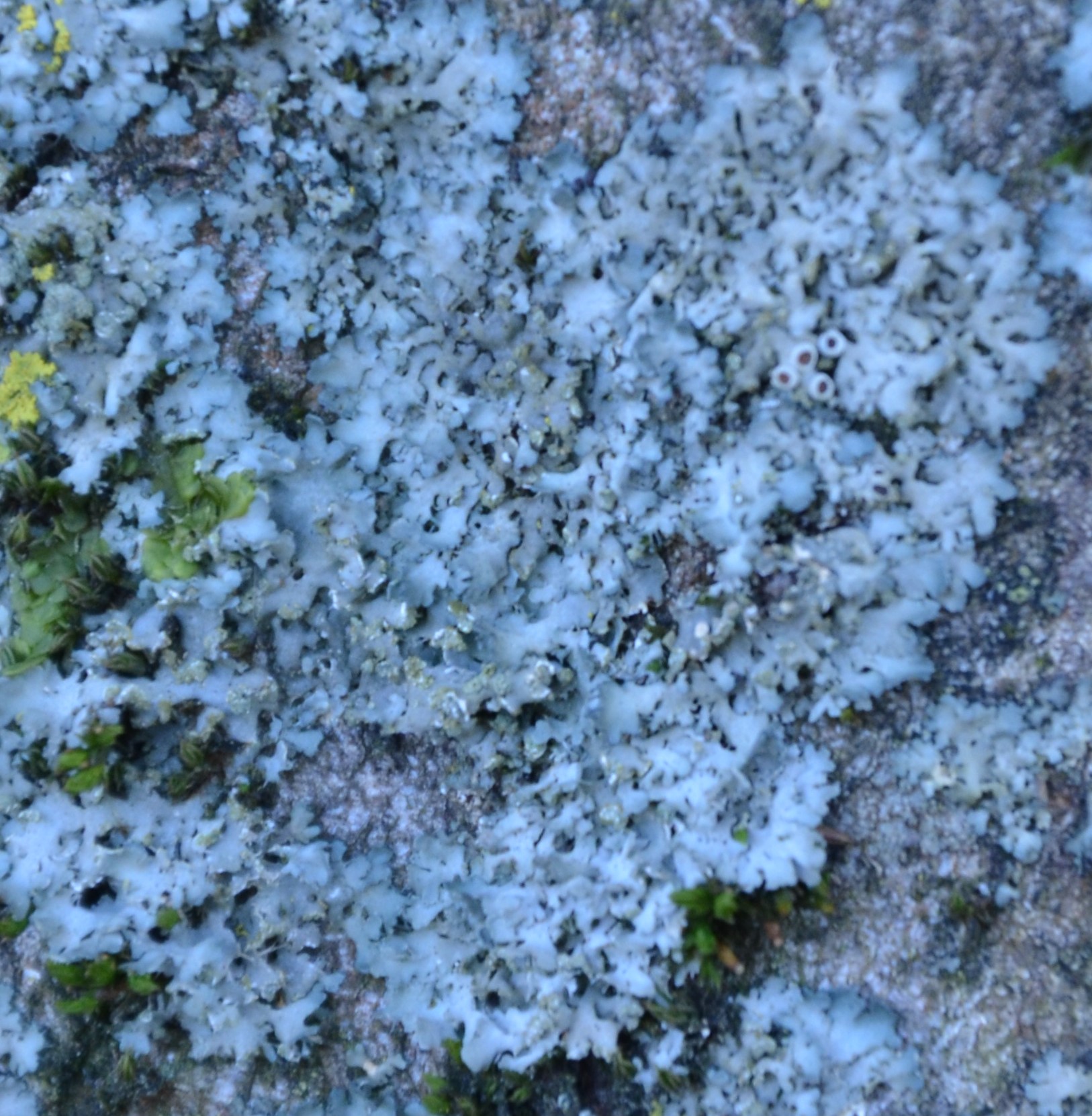
and Parmelia subrudecta.
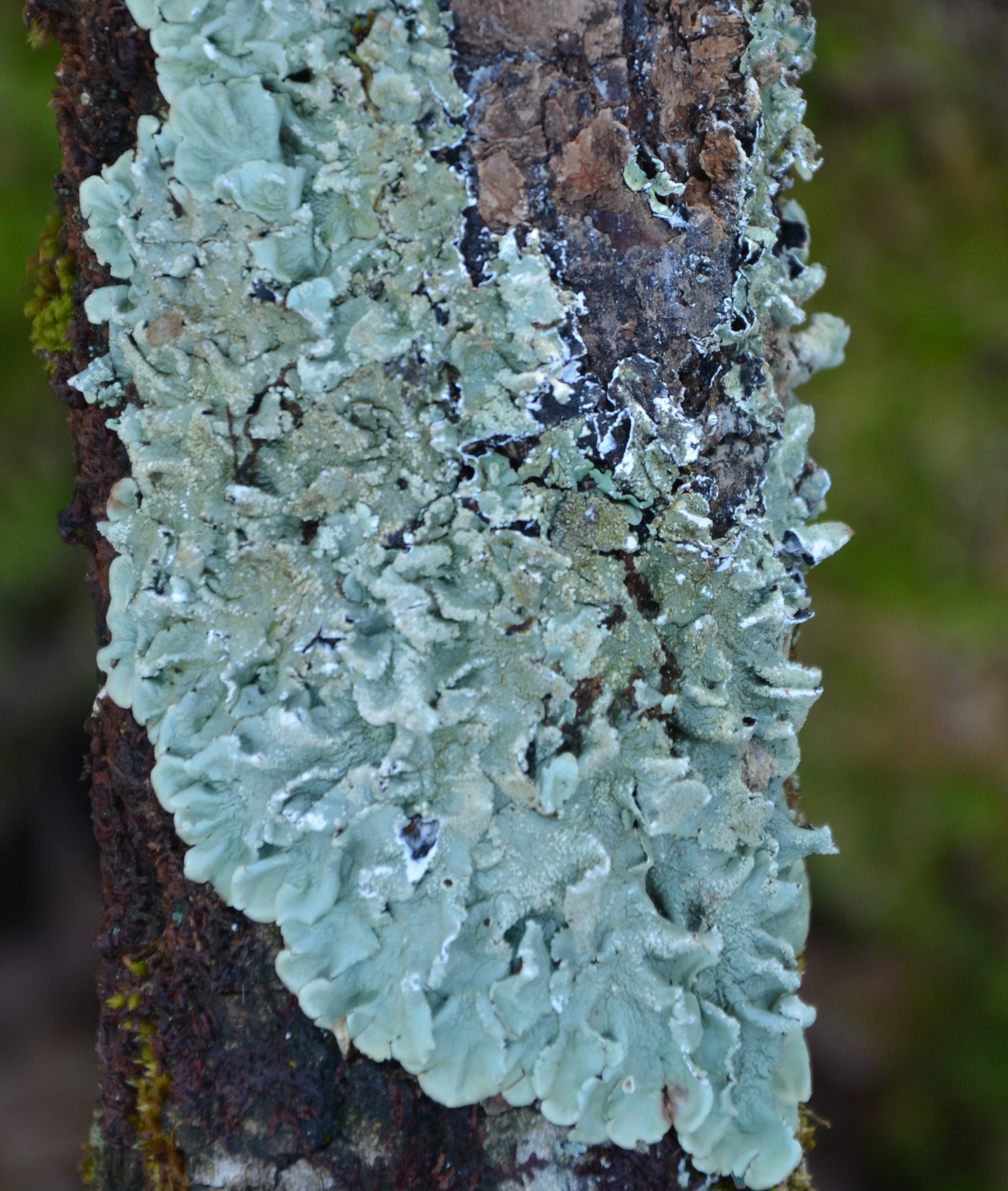
I notice parmelia on one of the fallen oak branches, indicating that the bulks of this lichen develop mainly on the branches in the tree canopy. I also come across the maritime sunburst lichen (Xanthoria parietina),
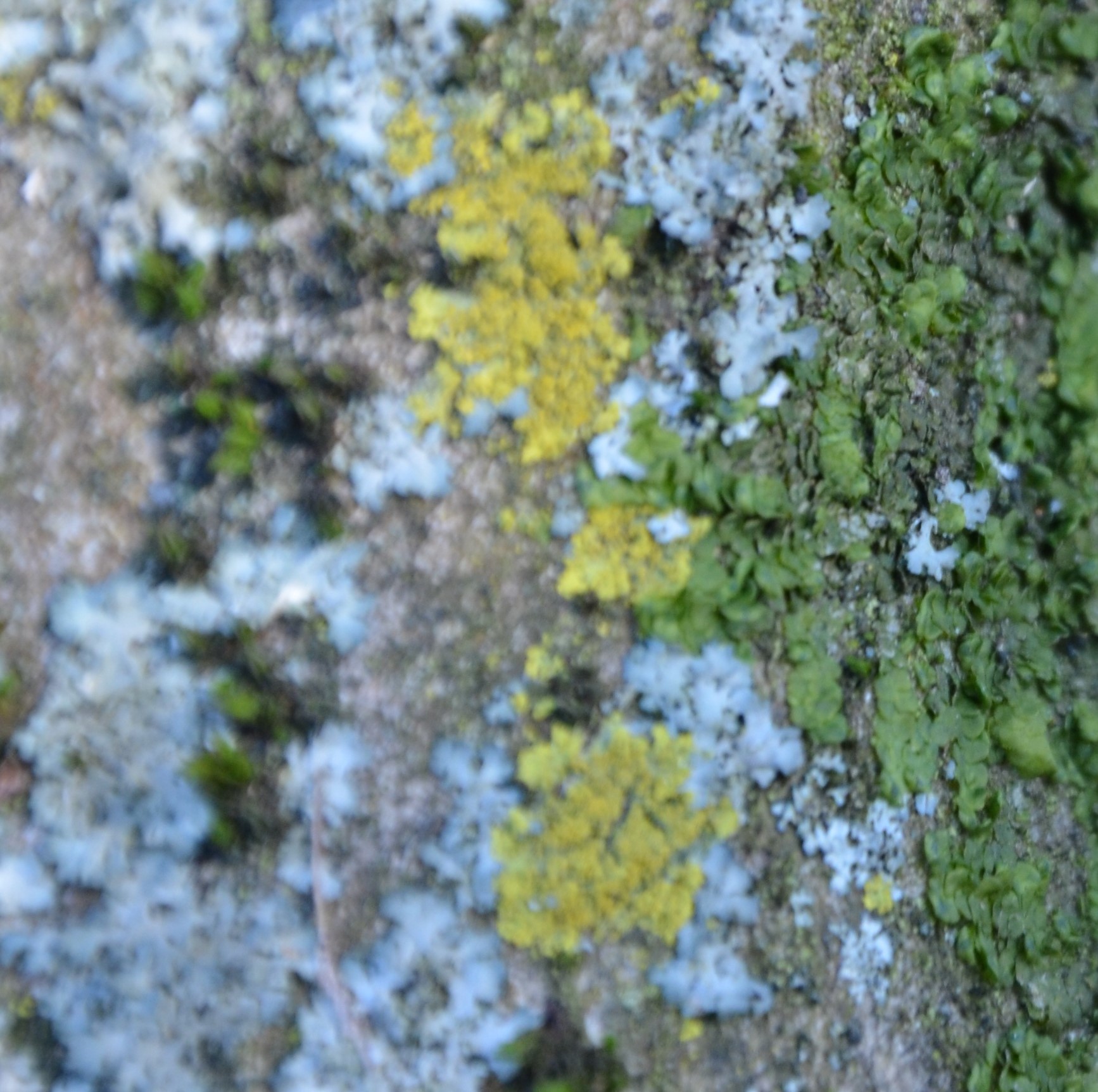
which belongs to the group of nitrophilic lichen species, and the tree lungwort (Lobaria pulmonaria),

which is very sensitive to polluted air. On the trunks of the white hornbeam there are larger groups of Phlyctis argena,

and originating from the same group of lichens there is also the very interesting Graphis scripta.
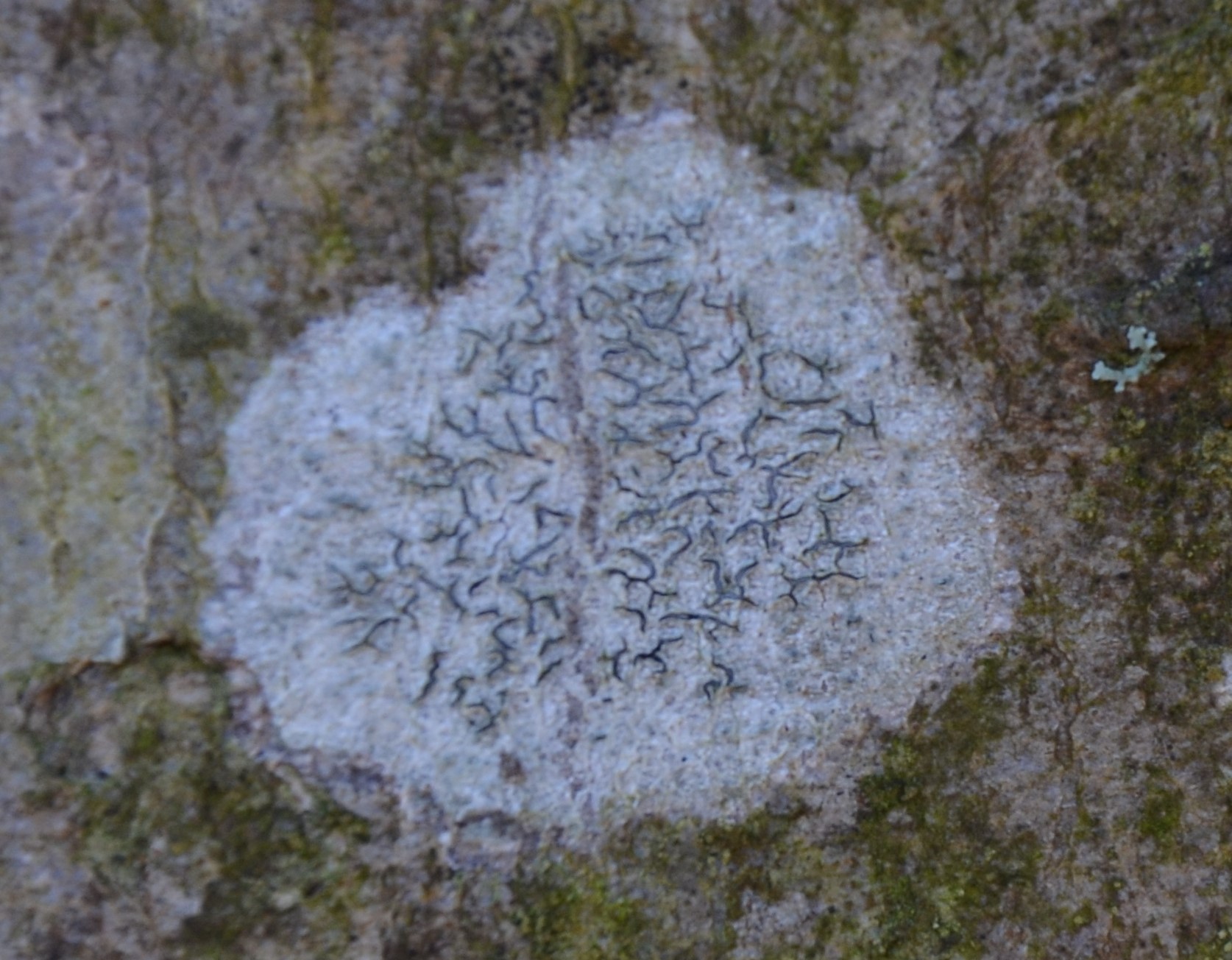
In addition to the mentioned species, Lecanora expallens is also present on some oak trunks.
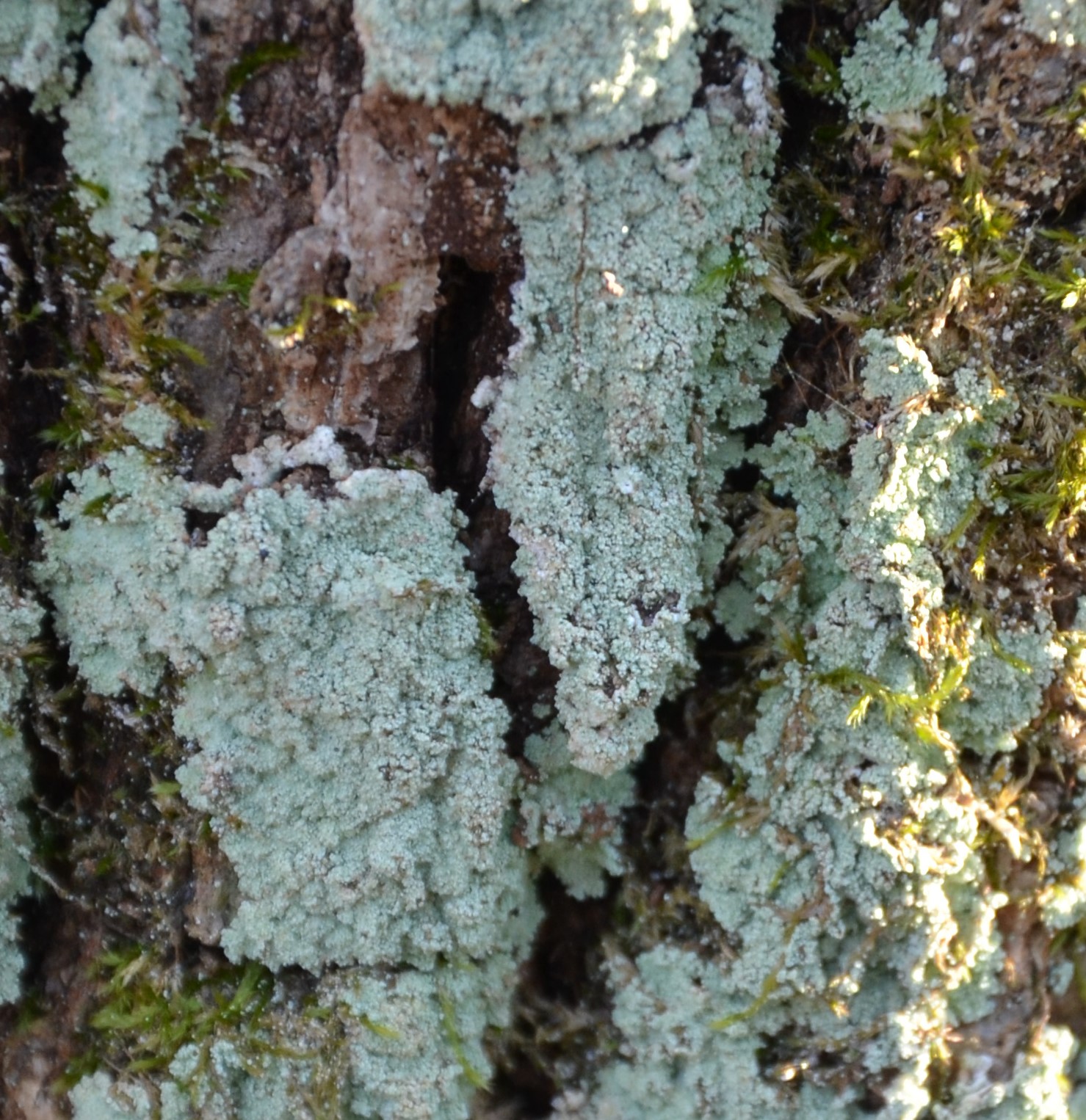
On a dry elder stump, I notice sponges of Auricularia auricula-Judah, also called the Jew's ear.
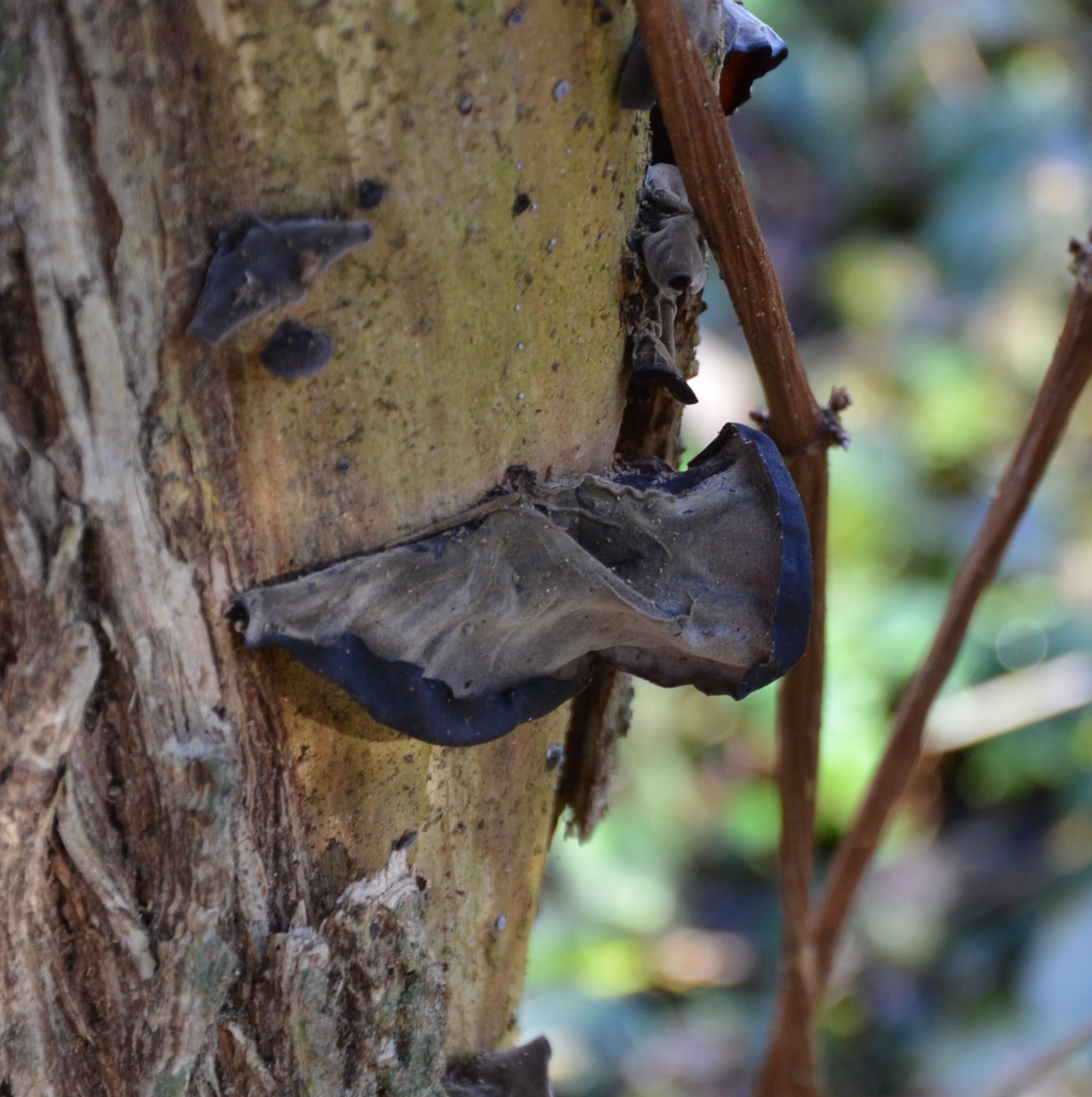
This saprophytic species is relatively common in Slovenia. Being edible, it is a common ingredient in Chinese soups and is a well-known species in Chinese traditional medicine. Later on, my attention is drawn to the milky stain on a piece of dead wood. This is Irpex lacteus,
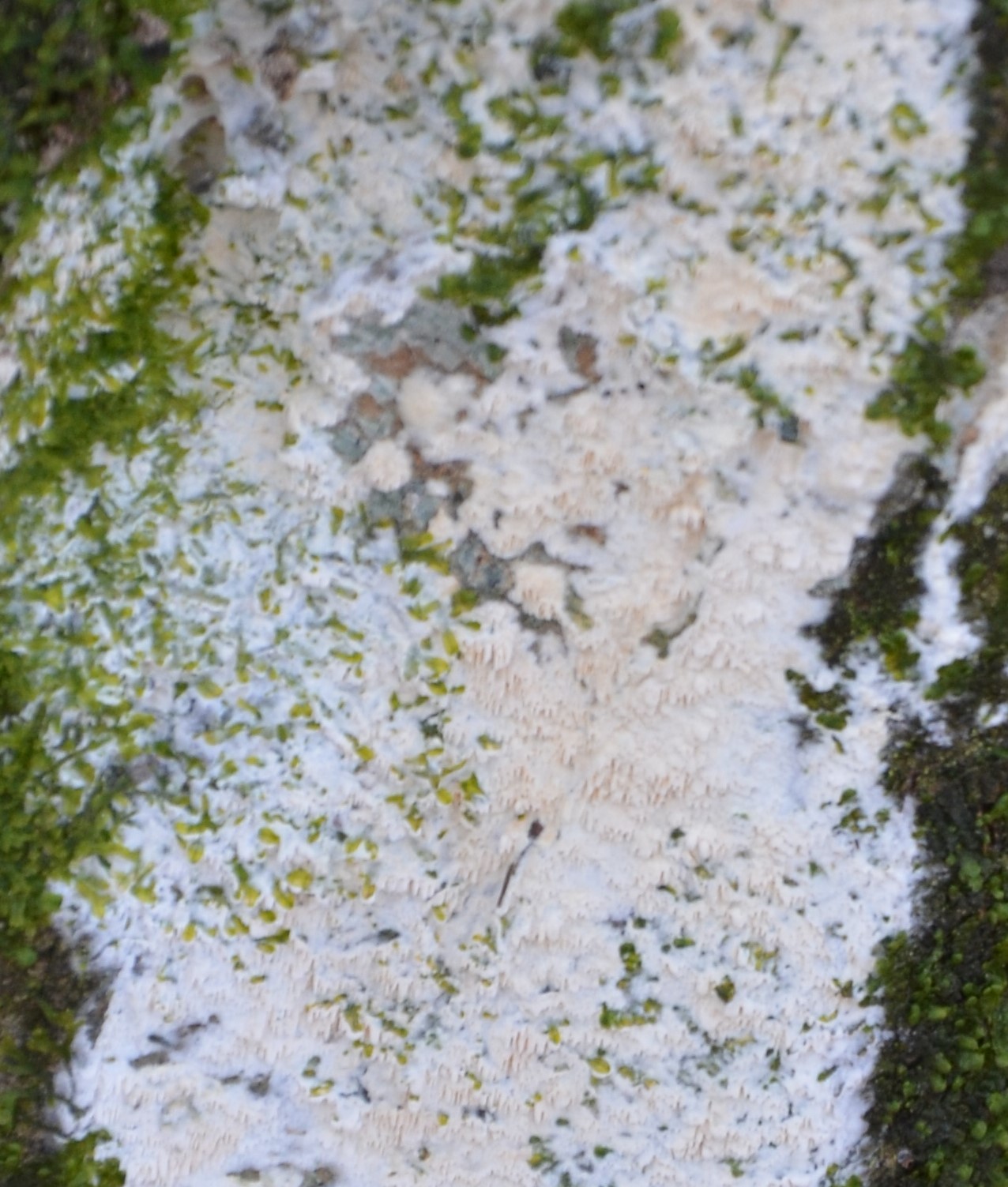
which appears on the bark of branches and trunks of deciduous trees. Its activity causes further decomposition of the attacked wood. Moving on, I am delighted to see Trametes versicolor with its rich colours.
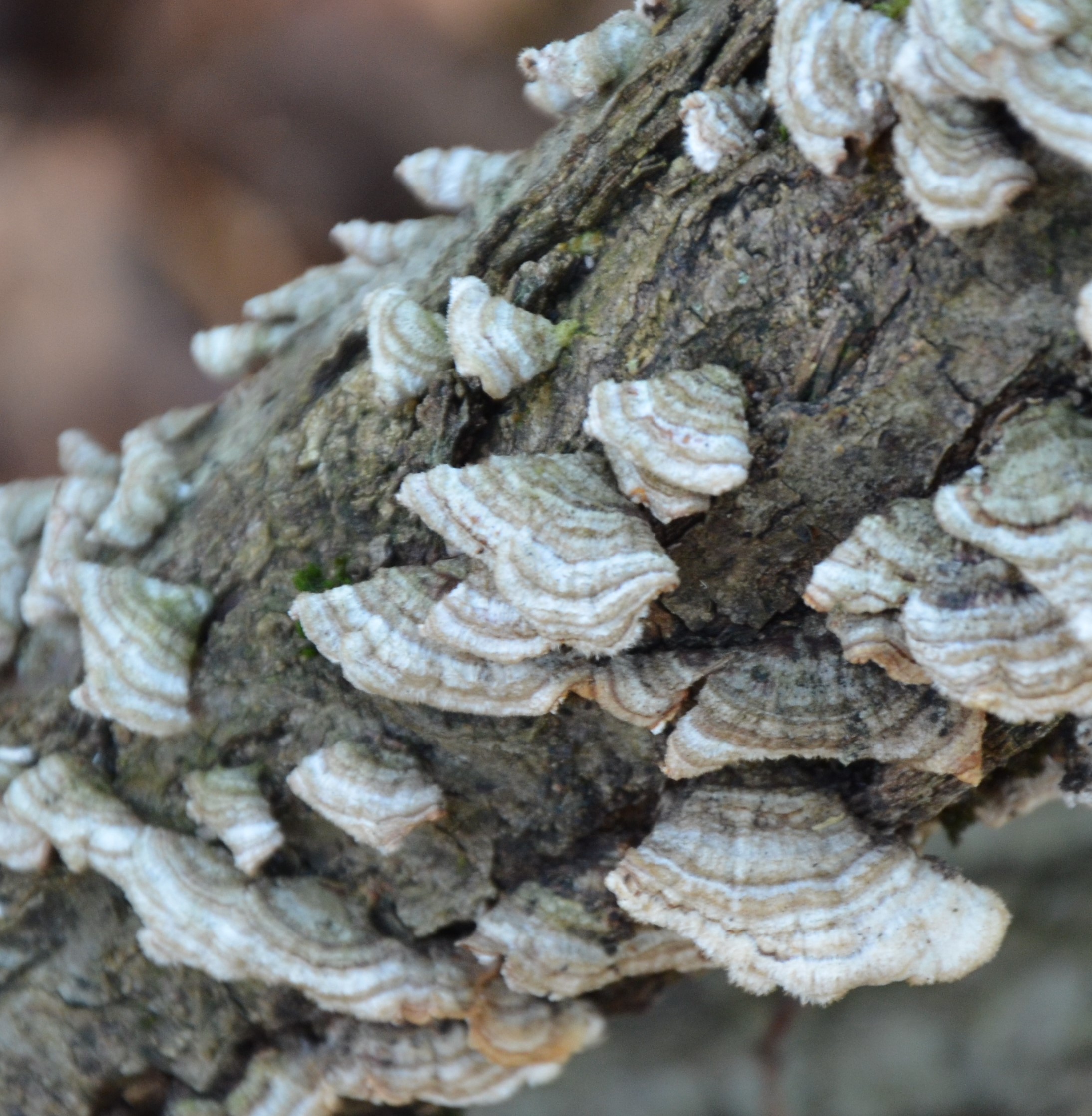
This species also belongs to the saprophytes. On a little trunk of a dead cherry I notice Trametes pubescens.
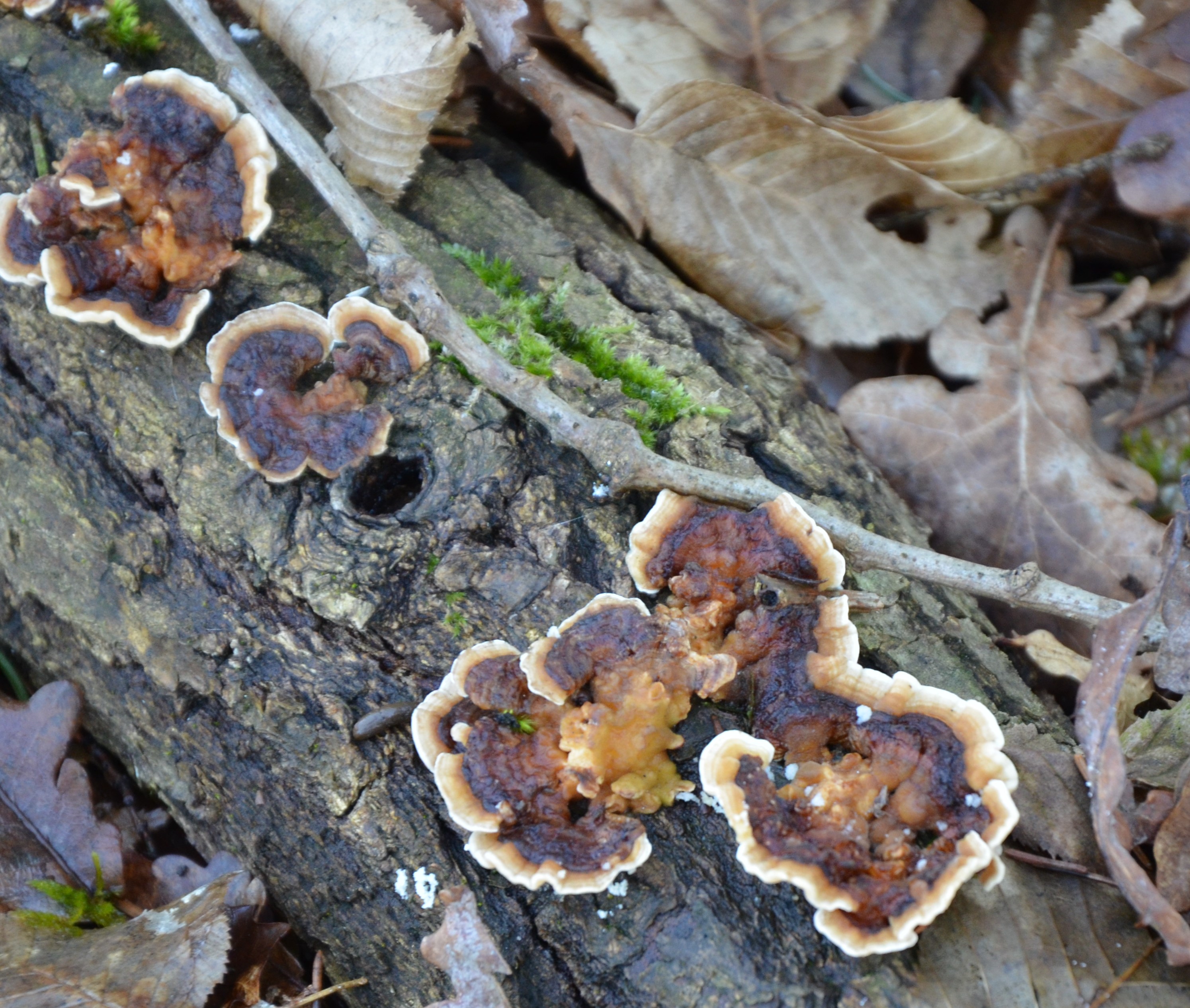
They grow in deciduous forests on dead branches or deciduous trees. I pay special attention to Schizophyllum commune,
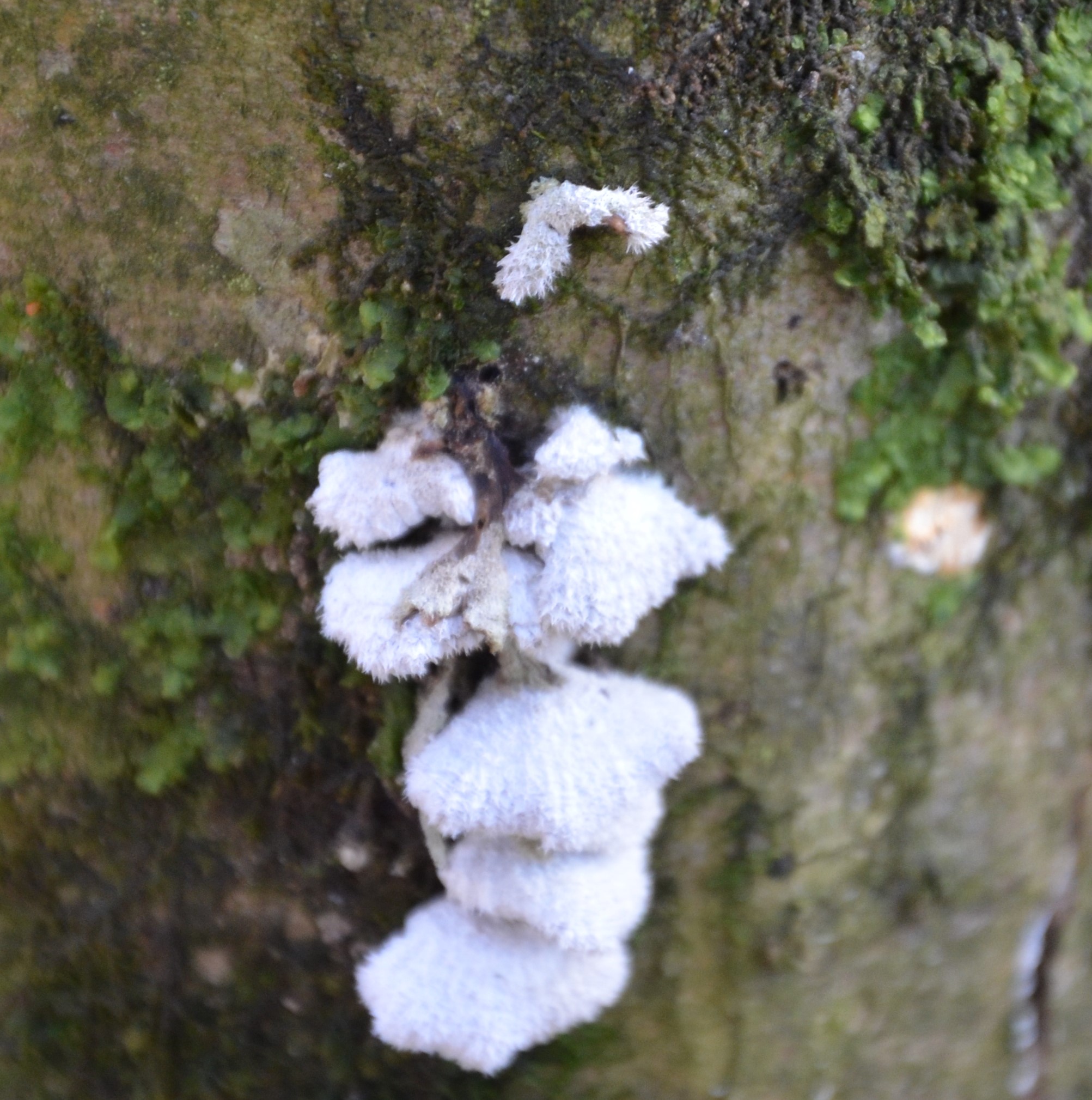
which has typically split leaves of the fruiting body and also lives parasitically on hives and damaged oak and alder trees, as well as on other deciduous trees. Finally, on the abandoned spruce log, I am delighted to see a colourful saprophytic fungus better known as the yellow brain fungi (Tremella mesenterica).
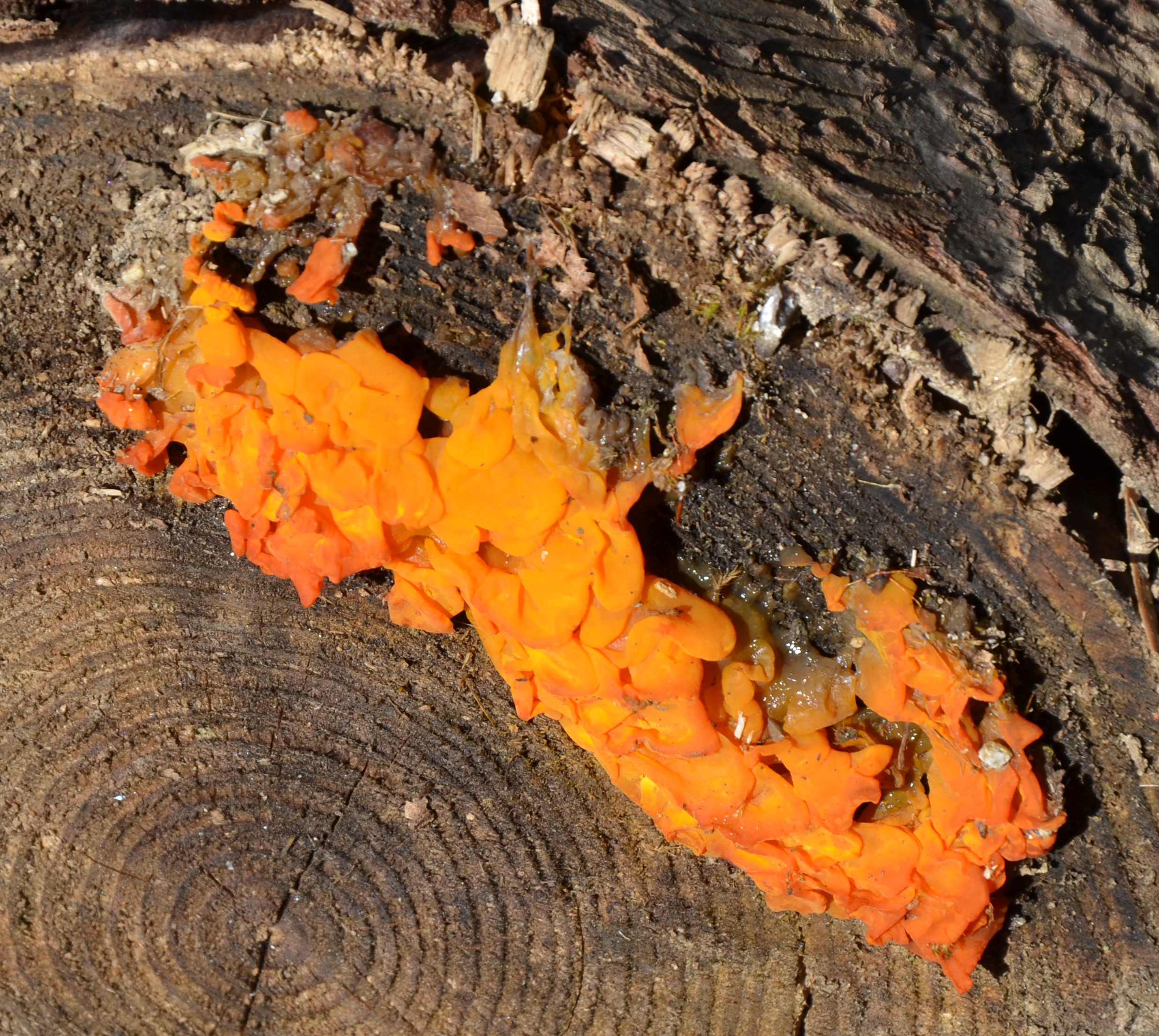
In the summer, when it dries, this mushroom becomes almost colourless.


